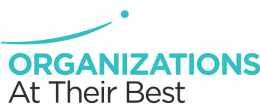Resistance: The most influential factor of organizational (change) processes
Traditionally, factors such as skills, work processes, economic resources, structures, market place dynamics, and the like, are seen as having the biggest impact the company’s economic success and on the outcome of any change process. Resistance, on the other hand, is experienced as something negative that needs to be overcome or removed as quickly as possible. This may relate to clients and organizational consultants alike. But what if resistance was the most important factor influencing the success of organizational (change) processes? It is my experience that as long as resistance occurs but is being brushed under the carpet, the full potential of an organization’s economic growth will not be reached, nor will lasting successful change occur.
The logic is simple. Employees resisting organizational (change) processes refer to their experiences, thoughts, beliefs, and expectations, all of which are very real for them. To ignore or deny those realities equals invalidating employees’ perspectives and ultimately them as a person. How do human beings react when they feel invalidated? They resist those who invalidate them. Therefore, ignoring or denying resistance does not lead to the magic disappearance of the resistance but – paradoxically – increases it. Even if staff will not resist openly, trust me, resistance will have a crucial impact. It may show on an informational level such that information is not flowing as freely as it should. Resistance may also manifest on an emotional level such that employees are disconnecting from the company and their commitment to its success. Ultimately, employees may lose trust in their company and its leadership. All of these consequences tremendously affect the quality of the daily operations within a company and will also significantly decrease the likelihood for your change project to succeed. The consequences of understandably uncommitted and untrusting staff that is working with one foot on the break are very costly.
Now, how to deal with resistance? Do not despair! There is a way out!
1.) Understand resistance as data:
Learn why employees perceive certain things the way they do. Ask yourself (and them of course): What criteria do they use? What factors do they include in the picture that you might be missing? What links do they see that you might overlook?
2.) Open up a two-way communication with your staff and encourage mutual learning:
These are two very vital factors for true and lasting change and success. Imagine the synergistic effect that comes from the meeting of different expertise, experience and backgrounds! Imagine the energy and commitment that comes from staff that feels heard and appreciated!
Yes, this perspective shifts the focus from our beloved tangible, objective targets to the underlying, subjective “touchy-feely” factors that make us who we are – human beings whose emotions, thoughts and perceptions that have an immense, if not the biggest, impact on an organization’s economic success. Like it or not.
I know, I know, there is never enough time to go through such an extensive process so we may yet again choose to ignore these factors and deal with what we have always known. That’s fair if that’s your choice, but consider this: In the long run, it will cost more time, money and other resources to go over the same issues again and again just because nobody ever invested the time and energy to look at the whole picture and therefore deprived themselves of the chance to make meaningful, real, and lasting change. In today’s ever changing economic environment having a committed and invested staff will be the one factor that takes organizations ahead of their competition!
